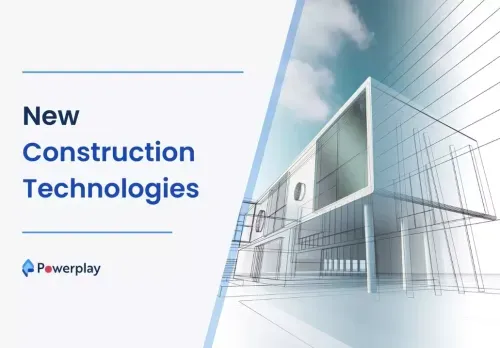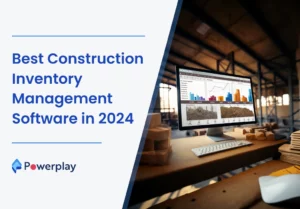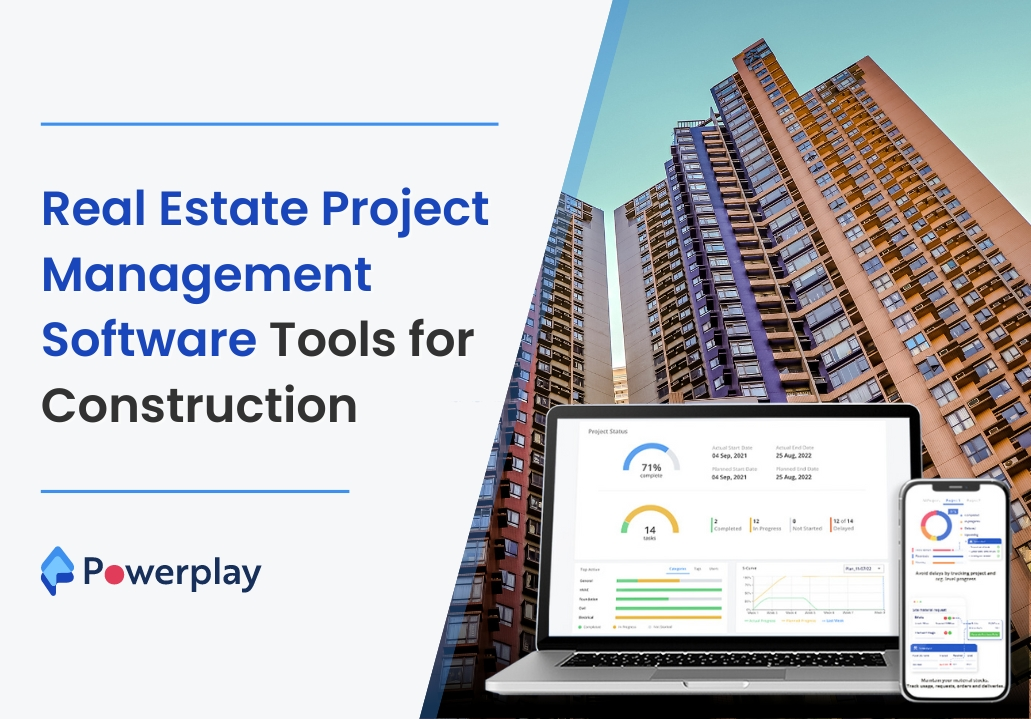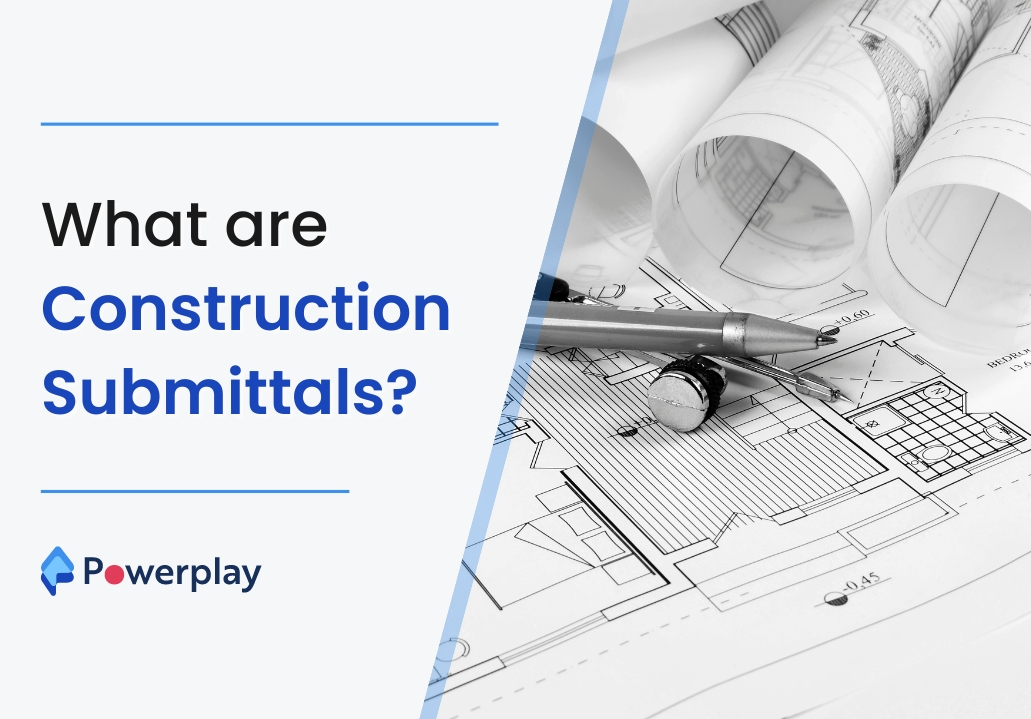New Construction Technologies
-
Kumar Abhishek Anand
- October 12, 2023

Technologies that have specific uses in the construction industry can be collectively called construction technology. Technologies such as augmented reality, smart design, smart contracts, virtual reality can be used in the construction industry to make a certain task or operation more time and cost-efficient. All these construction technologies have been created and adapted to assist the construction industry in enhancing working conditions, fostering efficiency, promoting health and safety, and many more benefits.

Table of Contents
ToggleNew Technologies Impacting the Construction Industry
With a long history of innovations, the construction industry has induced impressive advances in the variety of buildings and structures the industry can produce. For instance, cofferdams and caissons have paved the way for massive underwater structures, and developments in tower crane technologies have launched the construction upwards, making the construction of massive skyscrapers possible.
The construction industry has achieved an unparalleled level of transparency, choice and convenience in recent years, and the demand for higher quality, greater safety, and timely completion of projects has increased tremendously with the enhancement in capabilities. The introduction of new technologies has mitigated risks and assisted in streamlining the building production process.
Construction was in the booming phase before the pandemic but it has been difficult for the industry to protect its employees and keep the projects running. Now when its effects have still not disappeared, the industry is back on its previous track with technological advancements because the construction industry has and will continue to respond to dire situations with an increased focus on creation and conception. Therefore, the coming years will be filled with further developments in automation and technologies that are going to reshape the construction industry as everybody knows it.
Software Companies and information technology based organizations have acknowledged the demand for digitization of the construction industry and offered their services to provide tailored solutions for many construction processes. Advanced surveillance technologies such as sensors, cameras and drones are being used to monitor construction operations and build smarter structures.
Here are 8 New Technologies that are Reshaping the Construction Industry:
01 – Building Information Modeling(BIM) Technology
02 – Artificial Intelligence(AI) and Machine Learning
03 – Augmented and Virtual Reality(VR)
04 – 3D Printing
05 – Blockchain Technology
06 – Internet of Things(IoT)
07 – Big Data
08 – Drones and Robots
- Building Information Modeling(BIM) Technology

Building Information Modeling has become the most intelligent and commonly used technology in the construction industry that assists engineers, architects and construction professionals to effectively plan, design, model and manage building structures. BIM is the procedure that is followed to create a digital representation of a structure before actually constructing it to manage the physical characteristics of a construction project.
A meticulous representation of the building structure along with the necessary information is shared with everybody involved with the construction project that allows them to foresee roadblocks, reduce and eliminate risks, ascertain logistics, improve efficiency and ultimately form a reliable basis for decision making during the project process from conception to decommissioning.
Since every expert related to the building structure design can provide his expertise to specific areas of the same model, BIM technology in construction allows improved collaboration among all employees and stakeholders which enables proper review of project evolution and worked out results in real-time.
BIM can be used to create 3D models along with additional dimensions developed over the years such as 4D including schedule, 5D including cost estimating, 6D including sustainability, 7D including operations maintenance, to define information in a more structured manner. In short, BIM offers numerous benefits such as improved coordination, efficient design, time and cost savings, increased accuracies and a considerable reduction in errors and extra work that helps in saving on the project cost by about 5- 6%.

Building Information Modelling is useful at all stages of construction- before, after and during the construction project progress.
- BIM predicts future challenges before construction that reduces the need for any change orders during the project life cycle.
- BIM enhances communication, collaboration and efficiency during construction by providing a central hub for updation and accurate reference documentation.
- BIM provides the clients with useful information related to every small aspect of the building project after construction that enables effective management of the building structure throughout its entire life cycle.
- Artificial Intelligence(AI) and Machine Learning

Artificial Intelligence is a technology that provides the ability to computing systems to comprehend information, retain it as knowledge and use it in making and implementing decisions and ideas. Not only does AI interact with humans in a natural way but also learns simultaneously from these interactions with the help of machine learning.
AI has the potential to accelerate and improve productivity as it boosts human skill sets and reduces the need for humdrum human effort. AI can take decisions independent of human efforts while machine learning enables AI technology to assimilate information from past experiences and learn from it. AI technology equipped with machine learning can have immense implications for the construction industry where systematic and wise decision-making can have remarkable impacts on productivity and safety.

AI and machine learning have already started reshaping the construction industry in various ways some of which are:
- Job site safety and health improvement using machine learning processes and software that can analyze site pictures, predict and analyze risks and safety violations.
- Since machine learning can learn from past projects and analyze them, it can recognize inefficiencies and suggest better timelines that help in saving costs.
- Along with saving overall cost machine learning also improves building design as it considers all aspects and examines a multitude of variations.
- AI and machine learning create digital twins of the proposed building structure while considering various factors such as weather, location to perform predictive design.
- The overall productivity can be greatly improved with AI and machine learning which can power machinery to perform repetitive tasks such as bricklaying and pouring of concrete at a rapid pace.
Currently, AI is being used in the construction industry to optimize project schedules through past data, identify hazardous worker behaviour through image recognition and arrange signals and prototypes to employ real-time solutions. These sub-processes allow AI to emphasize maintenance schedules with the help of improved scientific tools. It is not wrong to say that AI and machine learning are going to impact and influence every small detail of a construction project right from the planning to the closeout stage.
- Augmented and Virtual Reality(VR)

Augmented Reality is a digital layer of information that provides a completely immersive experience shutting out the external physical world and presenting an improved view of the real world with the help of digital elements. They have proved not only to be a part of the gaming industry anymore but have also certainly become game-changers in the construction industry. Technologies like AR and VR have allowed construction firms to envisage the different elements of design, build and post-construction phases of the construction projects. Augmented Reality is a live direct or indirect view of the physical, real-world scenario with components augmented with the help of computer generated sensory input. VR and AR technologies when applied with BIM technology have endless possibilities where BIM can be used to create the building model and AR or VR can then be used to digitally see and walk through the proposed structure models.

Augmented and virtual reality can be used for many applications and some of them are:
- AR/VR provides better collaboration so that the project team can work together remotely from anywhere in the world.
- AR/VR technology allows 3D visualization of projects and their surrounding environments with the help of fast and accurate simulation of architectural or structural changes, spontaneous measurements and also allows design enhancements, which ultimately improves real-time design feedback drastically.
- Improvements in safety facilities and training schedules are priceless for any construction project site and AR/VR technology has the potential to work out safe working conditions. The safety of a construction site can easily be monitored remotely by managers, supervisors, inspecting officers, etc.
- AR/VR technology allows the project stakeholders and designers to take a virtual tour through the building structure models which gives them a first hand experience of what the physical structure will look like.
- Simulations can also be programmed for risk assessment and probable clashes at frequent intervals during the project duration.
- 3D Printing
3D printing is also famously known as Additive manufacturing which involves layer by layer construction of physical structures based on a digital design. Unlike traditional printers, 3D printers can use a variety of materials to construct structural members and even entire building structures. This construction technology is becoming an indispensable part of the construction industry with the passing time because it considers the impact created due to material sourcing and procurement. It has grown over time through technology to assist in more construction processes by using numerous suitable materials and providing unlimited flexibility in design. 3D printing has the potential to create three-dimensional structures layer by layer beyond the designers’ imagination, simply from a computer-aided design model. 3D printing also marginally reduces costs related to the construction of complex shapes and structures relieving architects and designers from the extra constraints.

3D printing can still be considered to be in an evolving stage with respect to large-scale construction projects and even then, here is how the construction industry is benefitting from 3D printing technology:
- 3D printing technology allows the freedom to prefabricate structural components either offsite or onsite depending on the requirements. Unlike traditional building processes, it is now possible with the help of 3D printing technology to prefabricate structural components or materials for prefabrication beforehand, ready to be used immediately.
- 3D printing technology also allows efficient material usage and reduces material waste generated on-site and saves time by sample production or quick structure creation all under surveillance to ensure that all aspects of the structure are appropriately designed.
- Unlike a traditional building which can take months or even years to be completed, 3D printed houses can be completed rapidly and be ready to use within a few days.
- The construction of a digitally designed structure using a 3D printer eliminates any errors in the physical structure which in turn prevents costly reworks.
- Blockchain Technology

Blockchain technology was initially developed to establish a digital currency in the year 2008. Blockchain allows the recording of information in the construction supply chain which increases functionality, efficiency and transparency, and broadly helps in construction project management. It has become increasingly important in recent times due to its accessibility and transparency features. Blockchain is an open public database in which virtual blocks are used to store any type of transaction. These blocks are peer-to-peer controlled or verified by a network or chain of computers. All the transactions that have occurred within a particular blockchain network are stored in the blocks of the network chain. Every node or block in the chain contains different types of information such as proof of a bank transaction, contract manifest, ownership papers and testimonies. Since the data stored in a blockchain is shared between end users, it does not require a central authority or a middleman to mediate these transactions. Blockchain is also capable of encrypting and protecting essential elements in construction operations and supply chains. Blockchain has the potential to handle all kinds of contractual relationships such as smart contracts and electronic verifications. Construction billing and transactions happening via blockchain technology allow improved transparency and accountability in construction projects by considering scope creep, changes in the contract along with waste reduction to reduce costs.

Blockchain technology can benefit the construction industry in a number of ways, some of which are:
- All information inside a blockchain network is encrypted which safeguards the proprietary information and makes the overall blockchain safe and secure.
- The storage requirement for the information stored in a blockchain network is not massive, it can be used for the storage of information for quite large projects.
- Since the blockchain network is decentralized its contents can be accessed remotely from anywhere in the world.
- Internet of Things(IoT)

The Internet of Things has already been an integral part of the construction industry for some time which allows connection between assets and big data analytics to provide new insights for project teams by securing huge amounts of authentic data in real-time. It is a chain of intelligent physical devices implanted in electronics, sensors, actuators, softwares and network connectivity, allowing the embedded devices to collect and exchange data over the internet, controlled from a central platform. IoTs can impact the construction industry drastically by providing a new smarter, more efficient and safer platform to perform different functions. IoT can be used to establish predictive maintenance programs which enable efficient functions such as shutting down unnecessary systems when are not needed and automatic opening and closing of structural parts as per requirements.

Some other functions which the IoT can perform within the construction industry are:
- IoT-based smart equipment can be used to carry out repetitive operations and also maintain itself if equipped to be smart enough.
- IoT can be brought in to track footfalls on site and applications which are used to check entry and exit information related to workers. This reduces lengthy manual processes to save time.
- IoT can help in identifying hazardous areas on construction sites by using geo-location and improving the safety of workers nearby the area by alerting them.
- IoT plays a crucial role in protecting the environment because it uses smart technology which can greatly reduce the carbon footprint of a construction project. Smart technology includes features such as automatic switching off of vehicles when idle, measuring waste to employ better ways of disposing of them, analyzing the construction site area to reduce travel across different sections.
- Big Data

Big Data is called the oil of the digital era because hundred years ago, the resource in question was oil in which the industry giants dealt with but in the present time organizations deal in data. A staggering 2.5 quintillion bytes of data are created each day in the current scenario. This data is stored and analyzed as Big Data. Big data can be defined as extremely large data sets that can be used to uncover hidden trends, patterns, correlations to take better business decisions and help to serve as the basis of artificial intelligence(AI) and machine learning. Big Data is mostly responsible for helping the construction industry advance in leaps and bounds. The data can be procured from any source such as internet websites, smartphones, social media platforms, digital pictures and many other forms of digital communication tools.

Big Data is assisting the construction industry in numerous ways, some of which are:
- The optimal phasing of construction activities can be determined by analyzing Big Data from weather reports, traffic trends, community and business activities.
- Embedded devices in equipments can be used to collect data about their active and idle time on site which can be processed to determine the appropriate leasing rates, purchasing probabilities, fuel consumption tricks to lower cost and environmental impact.
- Big Data from previous construction projects can be analyzed to predict patterns and risks associated with similar kinds of projects so that new projects can be successfully accomplished without any blockades.
- Big Data can be used as input for BIM systems to schedule maintenance activities as per the requirement and trends.
- Big Data from geolocation of types of machinery used on construction sites enables improvement in logistics, availability of spare parts when needed and reduction of downtimes.
- Big Data collected from energy conservation methods installed in building structures can be collected and analyzed to ensure that the energy-saving goals are being met. Also, Big Data gathered from stress and strain information of heavy structures can be analyzed to detect any life-threatening situations.
- Drones and Robots

When compared to other industries, the construction industry is the least automated industry that still makes use of all-inclusive manual labour as the fundamental source of productivity. It is completely astonishing that robots have not yet been employed to perform essential tasks. Robotic Process Automation(RPA) is a form of automation or a type of computer software that operates repetitively according to a certain process imitating and collating with human actions, engaging with the user interface of a computer system. RPA enhances speed, accuracy, consistency and reduces the cost of performing these repetitive tasks.

Drones are already contributing to the construction industry for some time and their usage is set to grow in the future. Simple flying drone setups with small cameras mounted on top can perform extraordinarily expensive monitoring tasks at much lower costs. In Construction Drones can be used for many purposes such as mapping via aerial surveys, tracking of equipments on-site and monitoring of theft-prone materials and resources.

New technologies are emerging continuously in the construction industry with market competitors boasting the use of similar technologies to boost their firm’s reputation. Construction companies need to understand that spending even 1% of their revenue on digital upgrades can prove to be a risky arrangement but not spending even a little on digital solutions and tools can prove to be hazardous for the company in terms of growth and market share. No one knows which technology will be accepted by the masses unequivocally, just like Android and IOS were chosen by the people to rule the smartphone market. The swift and smart evolution of construction technologies focuses that those who act quickly and firmly, embrace upgrades and strive for achieving long-term stability can disrupt the construction industry for good and be a leader among organizations in the future.
The construction industry in the Indian subcontinent is accelerating towards unimagined technologies that are certainly going to enhance the entire construction process on every construction project site irrespective of their scale or location. But to match up to the pace of development in construction technologies, the construction sites need to be managed more efficiently and effectively than in the present haphazard situations. Construction management can be improved by cutting ties with traditional manual methods used in construction management and adopting modern construction management tools such as Powerplay. Powerplay application is an impressive and absolutely free construction management tool that can perform all functions related to construction site management right from managing workers’ attendance to equipment and material management until the completion of the project. It can be used easily by almost anybody due to its easy and user-friendly UI.
Share
Kumar is a digital content professional with more than 2 years of experience in Blog writing, copywriting and scripting. His passion lies in the art of creating convincing content that plays a major role in converting leads for SAAS businesses.












